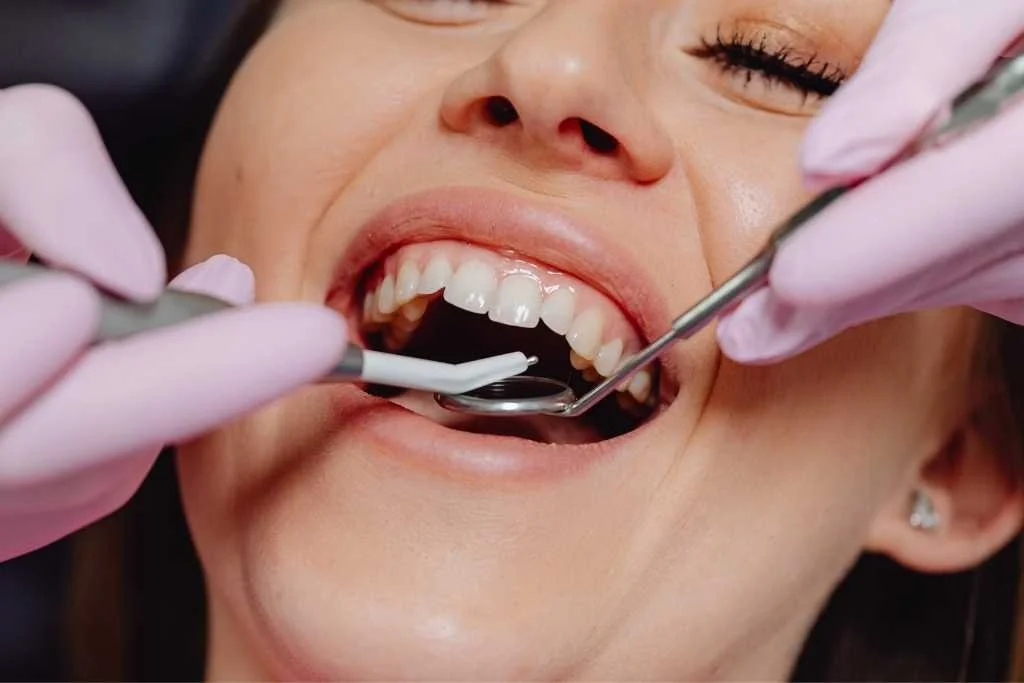What Causes Gum Recession?
Gum recession, loss of gum tissue around the root surface, is a disease that can be caused by many different factors. 84% of teenagers & adults suffer from gum recession which can result in long and ugly teeth, sensitive roots and ultimately tooth loss. Gum recession can be both an esthetic (cosmetic) problem as well as a functional problem. Without the good thick tissue protecting our teeth, the teeth can develop cavities and bone loss, ultimately leading to larger problems. When treated early gum recession can be an easy fix but if treated late, treatment can become much more complex and costly. The most common causes of gum recession are as follows.
Gum Infections
Oral bacteria can cause gum infections including gum diseases like gingivitis and periodontal disease. During these diseases, the gum and bone tissue can be lost which cause the gums around the teeth to recede. Patients can develop long looking teeth that can become loose. Common signs of gum disease include bleeding gums, loose teeth, increased spaces between teeth, gum loss around the teeth, bad breath, and red swollen gums.
Aggressive Oral Hygiene (Tooth Brushing)
Gum tissue can be lost by an oral home care routine that is too aggressive. Most commonly, people will brush their gums and teeth with a toothbrush in a manner that is either too hard and/or with a toothbrush that is too hard. When the gums are over brushed or flossed, they can be traumatized, and the gum tissue can recede around the teeth.
How Does Genetics Cause Gum Recession?
People can be born with thin gum tissue that is more likely to recede than other people with thicker gum tissue. There are two types of tissue in the mouth. One type of tissue is called keratinized tissue which is thick and protective. The other type of tissue is called mucosa which is thin and not protective. People born with thin gum tissue are more likely to develop gum recession. Gum grafting is a technique that increases the amount of keratinized tissue around teeth with recession or prevent recession from occurring in people with thin gum tissue.
How Does Orthodontic Movement (Braces) Cause Recession?
When a person gets either braces or clear aligners like Invisalign, teeth are moved into different positions in the jaw. Teeth are often moved in a direction to lessen the teeth crowding in the jaw. Teeth moved in this direction, which increases the room in the jaw for crowded teeth, may result in thinning of the bone around the teeth resulting in gum tooth recession. This recession can happen during the orthodontic movement or many years after completion. An Orthodontist will often send people with thin tissue to a Periodontist to evaluate the gum and bone around the teeth to be moved and see if gum grafting is needed to build up the gum tissue before orthodontics begin.
How does smoking & tobacco products cause gum recession?
Smoking, vaping, and chewing tobacco products can cause gum recession around teeth because of the chemicals in the tobacco products. The hot smoke from smoking can traumatize the tissue leading to gum tissue loss. Chewed tobacco can harm the gum tissue from both the chemicals in the tobacco as well as the friction from the material against the gums.
Bad Bite
Many dental studies have shown that people who have bad bites with teeth banging against each other can develop recession around their teeth. Typically, bad bites will quicken the amount of recession someone can develop, especially if they already have bacteria in their mouth that cause bone and gum tissue loss.
Teeth Grinding & Teeth Clenching
Like a bad bite, grinding your teeth or clenching them together can quicken the recession you can get when you have bacteria that causes gum and bone tissue loss in your mouth. People who grind their teeth can find ways to prevent damage to their teeth by using a night guard and/or botox treatment in the jaw.
Mouth Trauma
Trauma or a direct blow to the gums can cause recession by ulcerating the gum tissue or having the gum tissue peel away from the tooth. If the tooth is healthy and is not suffering from gum disease already, the gum tissue can grow back to normal levels after it heals from the trauma. If the gums do not grow back in 3-6 months, the gums may need to have soft tissue grafting to bring them back to normal levels.
Call 212-751-8530 today to schedule an evaluation with Dr. Scott Froum in Midtown Manhattan or request an appointment online.
Contact Us
Address
1110 2nd Ave Ste 305
New York, NY 10022
Phone
Tel: 212-751-8530
Fax: 212-751-8544
Hours
Monday | 9am - 5pm
Tuesday | 9am - 5pm
Wednesday | 9am - 5pm
Thursday | 9am - 5pm
Friday | 9am - 5pm
Saturday | Closed
Sunday | Closed




